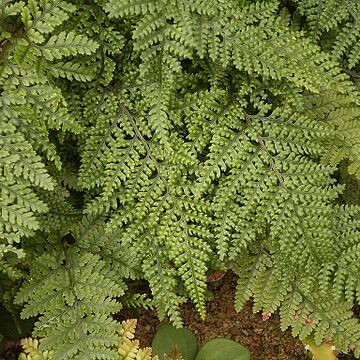Epiphytic, lithophytic, terrestrial or climbing homosporous ferns. Rhizome short or long-creeping, usually densely scaly, sometimes producing stolons. Scales elongate, tapering from a broad peltately-attached base; margins often variously ornamented with teeth or hairs. Fronds variously divided and lobed, from simple to 3-pinnate, often markedly dimorphic. Stipes tufted or scattered along the rhizome, articulated to rhizome or not, sometimes articulated to a phyllopodium. Pinnae articulated to rachis or not; rachis and lamina sometimes bearing scales or hairs; venation open, simple or forked; hydathodes sometimes associated with vein endings. Sori of various kinds formed on undersurface or at margins of pinnae; indusium present or absent. Spores bilateral, spherical or ellipsoidal; surface usually ornamented. Gametophyte cordate to strap-shaped, often bearing hairs.
Epiphytes with wide–creeping rhizomes, rarely terrestrial or suberect (Nephrolepis); tubers sometimes present (Nephrolepis); scales peltate; stipes jointed to the rhizome, except in Nephrolepis and Arthropteris where the pinnae are jointed to the rhachis
Epiphytic or terrestrial, less often on rocks; rhizome short-to long-creeping, densely clothed with often cordate or peltate sometimes toothed often clathrate scales which have hairs (often glandular) on the surface and/or margin

